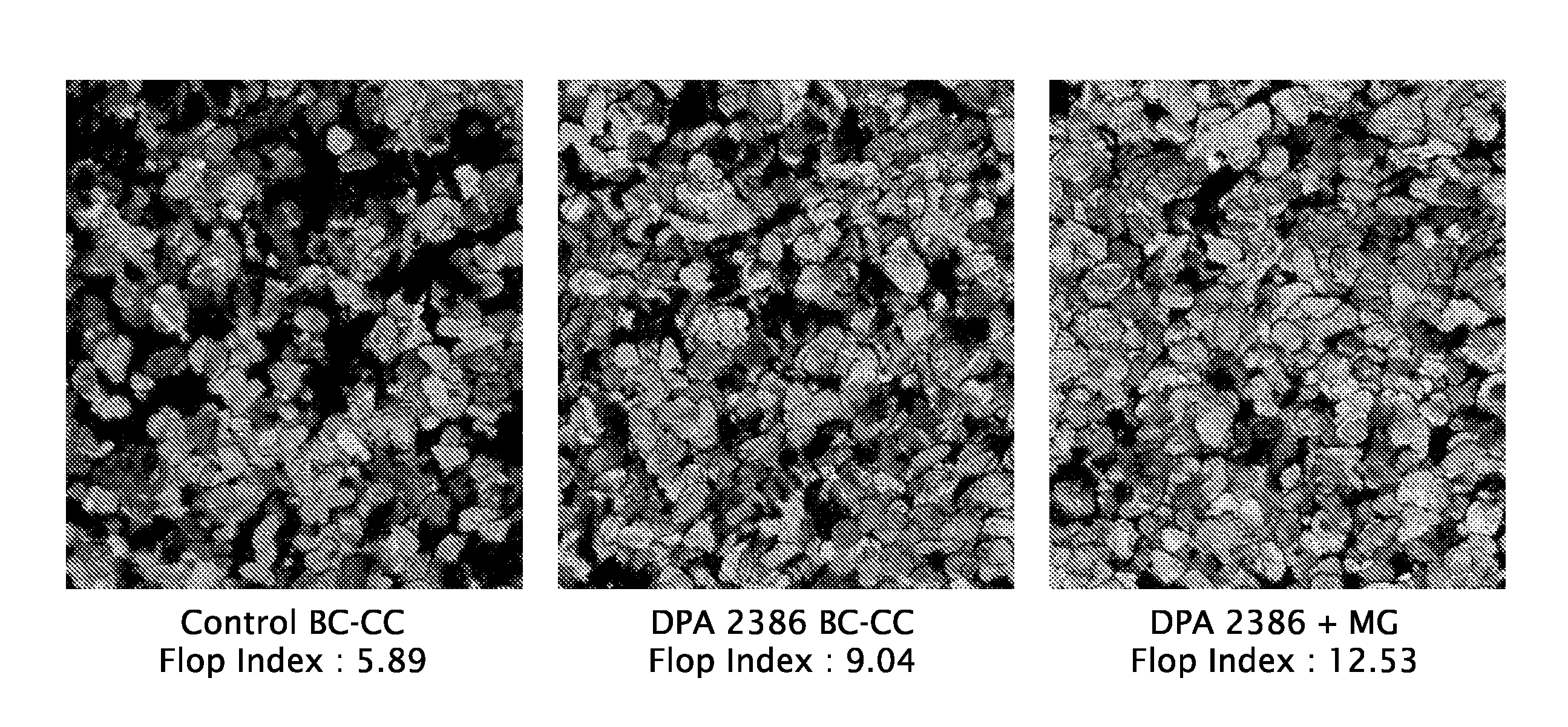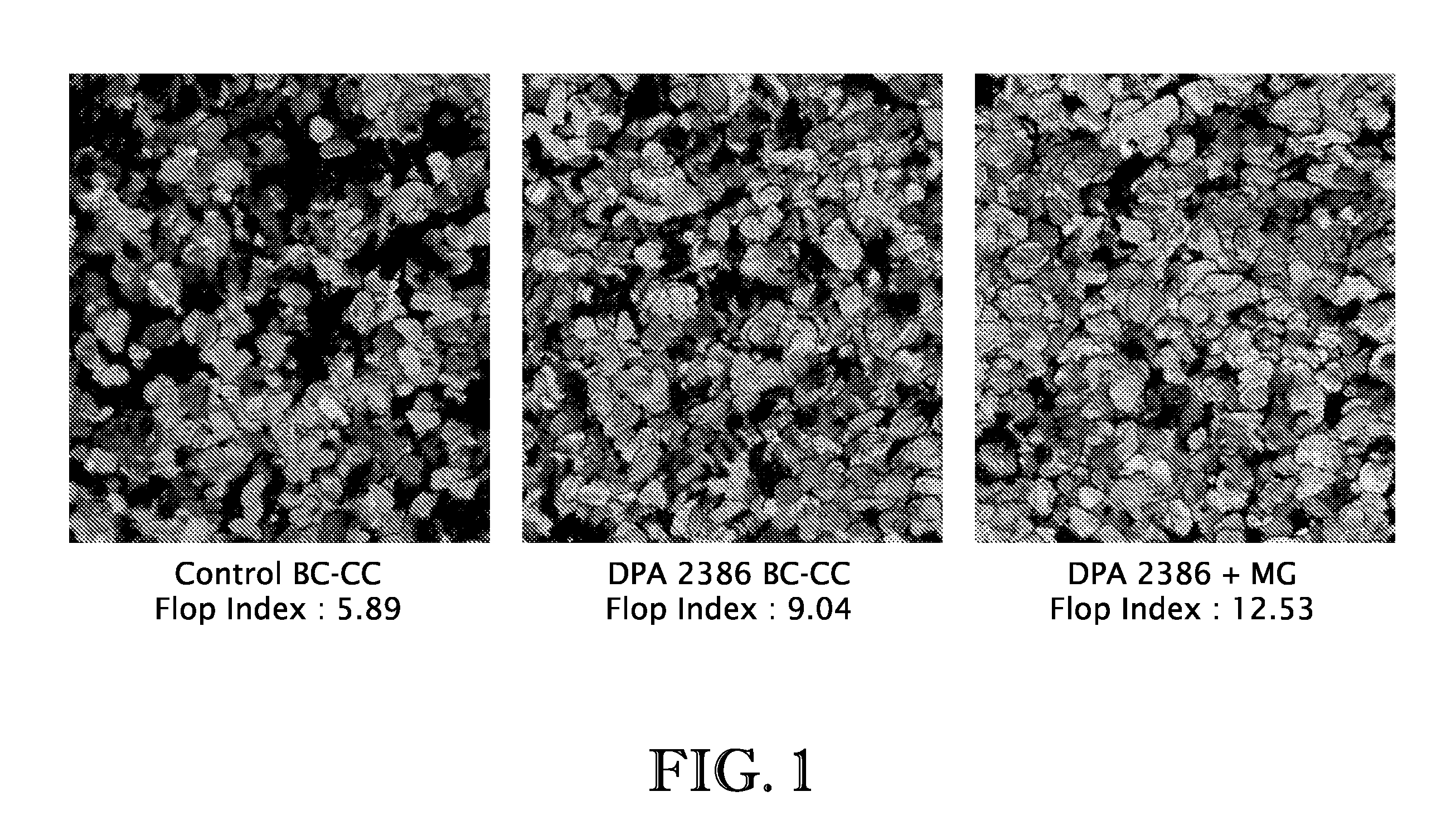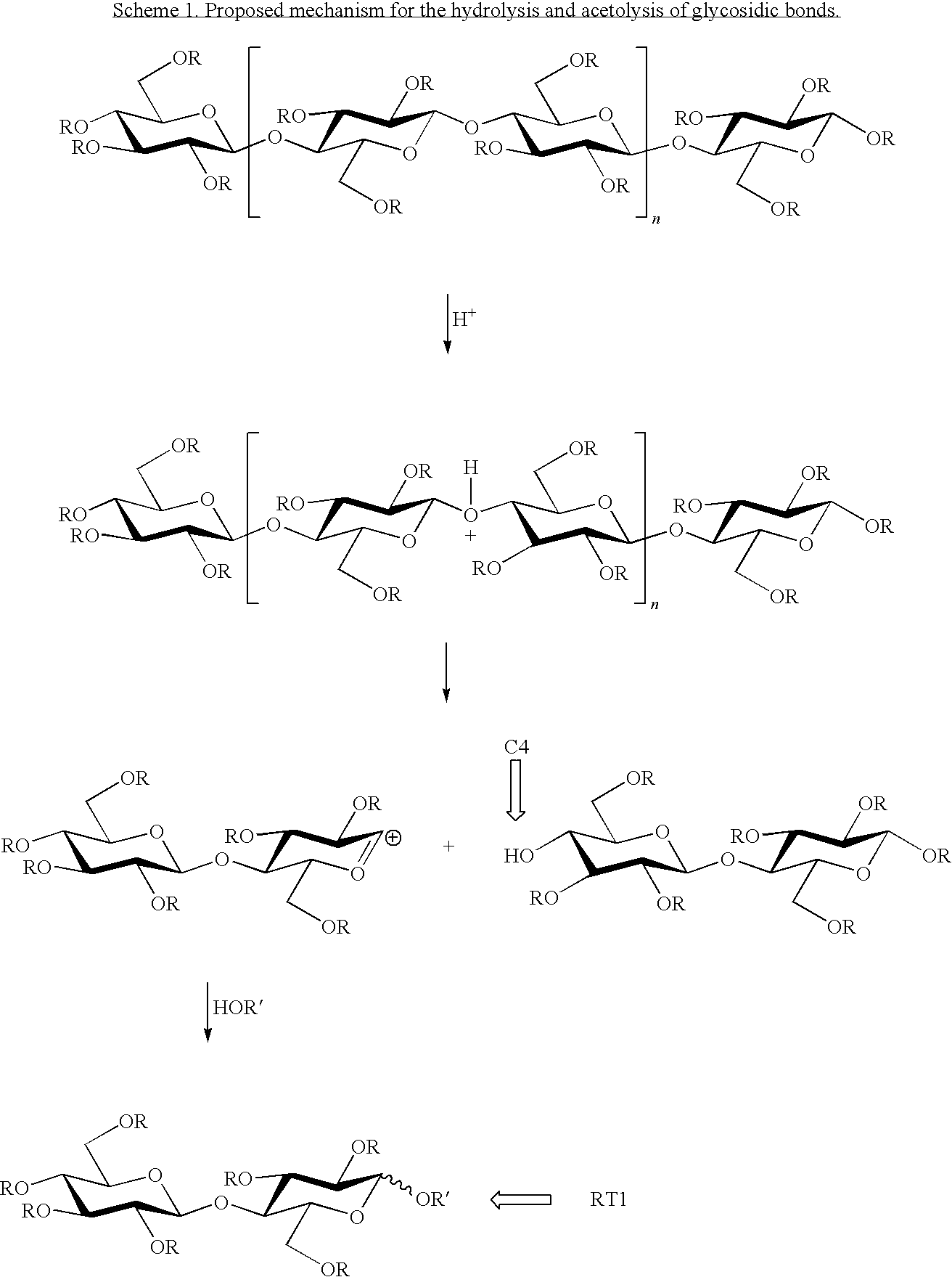Basecoat coating compositions comprising low molecular weight cellulose mixed esters
- Summary
- Abstract
- Description
- Claims
- Application Information
AI Technical Summary
Benefits of technology
Problems solved by technology
Method used
Image
Examples
example 1
[0164]The purpose of this experiment was to identify the type of low molecular weight cellulose mixed ester that could be used as a performance additive to improve brightness and overall appearance in high-solids OEM basecoat systems.
Table 2: Formulated high solids basecoats containing different grades (% butyryl) of Eastman Developmental Performance Additives (DPA) (cellulose mixed esters)
TABLE 2Formulated high solids basecoats containing different grades(% butyryl) of Eastman Developmental Performance Additives (DPA)(cellulose mixed esters)InventiveInventiveInventiveControlExample 1.2Example 1.3Example 1.4Example 1.1No MG1 / 10No MG / 10 wt %No MG / 10 wt %Basecoat composition ComponentsNo DPAwt % DPA-38DPA-33DPA-29Setalux 16-1173 Polyester Polyol105898989(film-forming polymer) (60 wt % totalsolids)Setamine US-138 BB-70 Melamine38.638.638.638.6Crosslinking Agent (70% TS3)DPA-38 38% butyryl (50 wt % in SB2)01800(mixed cellulose ester)DPA-33 33% butyryl (50 wt % in SB2)00180DPA-29 29% but...
example 2
[0169]The purpose of this experiment was to demonstrate an improvement in strike-in (redissolve resistance) and overall appearance in samples formulated with DPA-29 mixed cellulose ester as previously described. The formulation details are provided in Table 4. About 800 ml of the formulated basecoat composition were used for electrostatic bell application in a robotic spray booth. A commercial OEM clearcoat was used in this example. The basecoat composition was applied at 27 s (Ford Cup #4 viscosity) and had a non-volatile content of 51%. The target dry film thickness (DFT) was 0.7-0.8.mils (about 20 microns) for the basecoat composition and 1.6-1.7 (about 35-40 microns) mils for the clear coat.
TABLE 4Formulated High Solids Basecoat CompositionsControl 2.1Inv. 2.2Inv. 2.3Control 2.4Control 2.5Inv. 2.6MaterialControlAkzo MG / DPACoroc MG / DPAAkzo MG onlyCoroc MG onlyDPA-29 onlySetal16-1173 Polyester Polyol52.532.032.041.041.044.5(Nuplex) (60 wt % TS1)Setamin US-138 Melamine Crosslinking...
example 3
[0171]The formulations in this current example are shown in Table 5. These basecoat compositions used a different grade of aluminum flakes. The experiments were conducted to ensure that the choice of flakes / pigments had no impact on the performance benefits of mixed cellulose esters in the basecoat formulation. The commercial clearcoat mentioned in Example 1, was used in this case as well.
TABLE 6Formulated High Solids Basecoat Compositions UsingSilberline Sparkle Ultra 6555 Aluminum FlakesControl 3.1Inv. 3.2ControlNo MG / Inv. 3.3No MG / No10 wt % DPA-10 wt % DPA-2386 / Control 3.4DPA238612 wt % C-MG312 wt % C-MGSetal 16-1173 Polyester Polyol(60 wt %149112549001197TS1)Setamine US-138 BB-70 Melamine549540540540Crosslinking Agent (70 wt % TS)DPA 29 29% Butyryl (50 wt % in SB2)02522520Ceratix 8461 wax (5 wt %)600561561561Coroc Microgel R-1623 (50 wt %)00351351Silberline Sparkle Ultra 6555 metal189189189189flake(75 wt % TS)BYK-358N leveling additive (52 wt %)15151515Solvent Blend156189192147t...
PUM
| Property | Measurement | Unit |
|---|---|---|
| Temperature | aaaaa | aaaaa |
| Percent by mass | aaaaa | aaaaa |
| Percent by mass | aaaaa | aaaaa |
Abstract
Description
Claims
Application Information
 Login to View More
Login to View More - R&D
- Intellectual Property
- Life Sciences
- Materials
- Tech Scout
- Unparalleled Data Quality
- Higher Quality Content
- 60% Fewer Hallucinations
Browse by: Latest US Patents, China's latest patents, Technical Efficacy Thesaurus, Application Domain, Technology Topic, Popular Technical Reports.
© 2025 PatSnap. All rights reserved.Legal|Privacy policy|Modern Slavery Act Transparency Statement|Sitemap|About US| Contact US: help@patsnap.com



